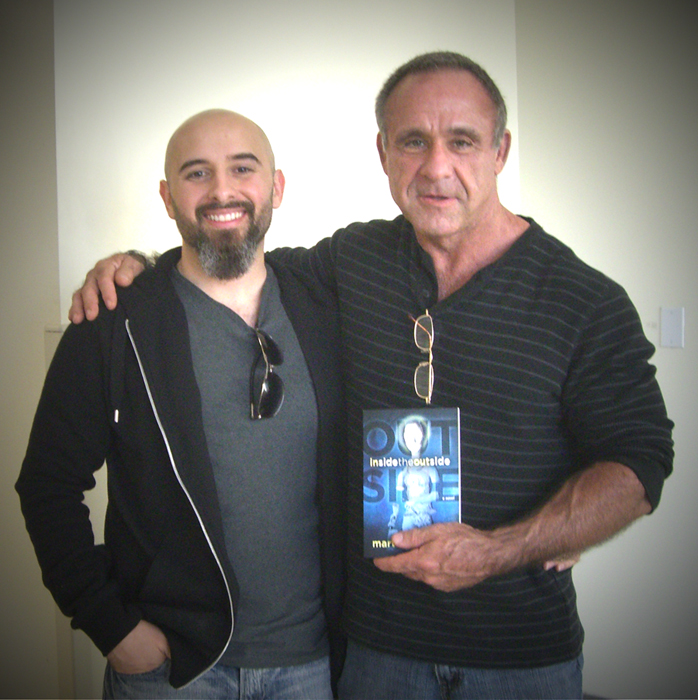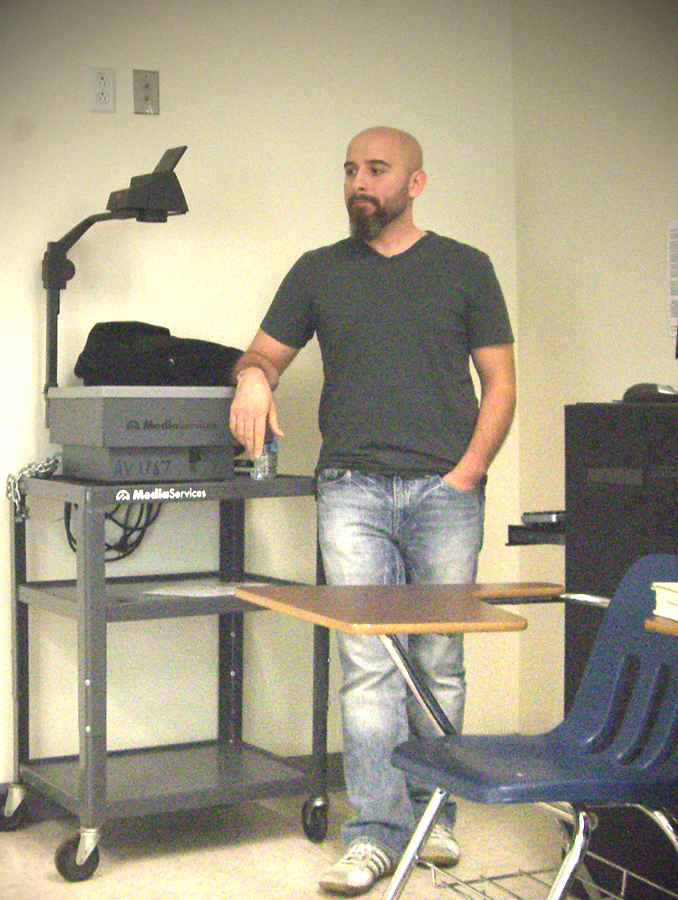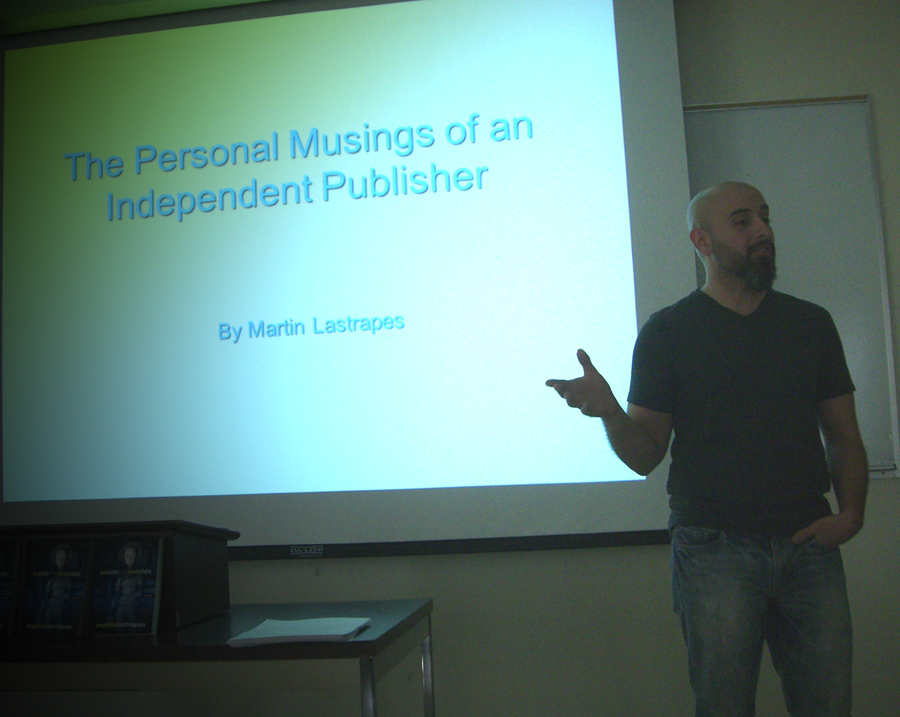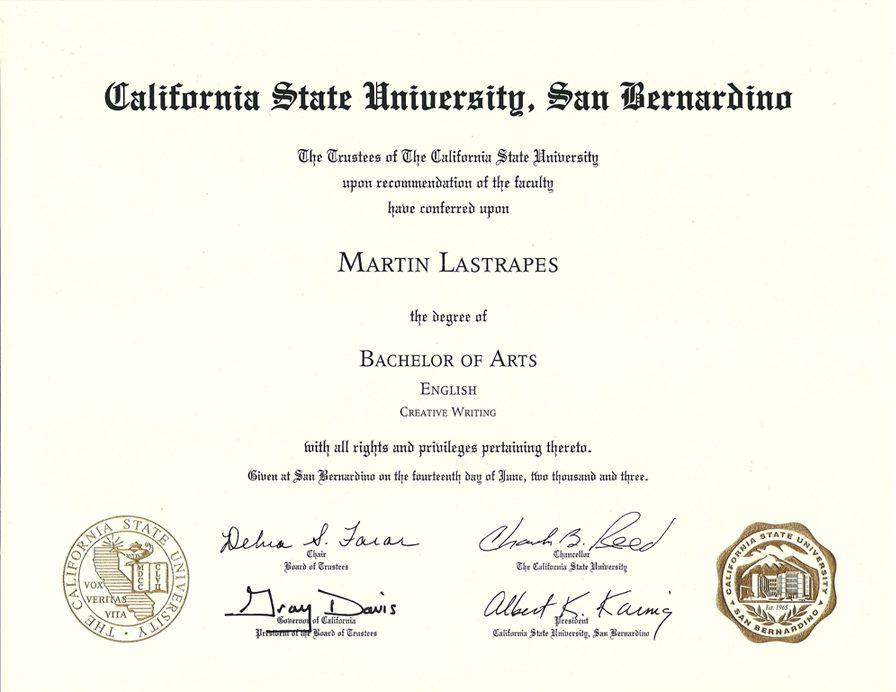 When my friend and former writing professor, James Brown, invited me to speak to the students of his Advanced Creative Writing class, I was both excited and honored. In July of 2011 I officially became an indie author with the publication of my novel, Inside the Outside. Brown's students, being in the MFA program, will all presumably look to have their own work published one day and so he thought it'd be good for them to hear about my experience as an independent publisher. He'd set up Tuesday, November 15, 2011, as my day to speak. I spent quite a lot of time thinking about the presentation I wanted to give and the things I wanted to tell the students.
When my friend and former writing professor, James Brown, invited me to speak to the students of his Advanced Creative Writing class, I was both excited and honored. In July of 2011 I officially became an indie author with the publication of my novel, Inside the Outside. Brown's students, being in the MFA program, will all presumably look to have their own work published one day and so he thought it'd be good for them to hear about my experience as an independent publisher. He'd set up Tuesday, November 15, 2011, as my day to speak. I spent quite a lot of time thinking about the presentation I wanted to give and the things I wanted to tell the students.
I wanted to tell them that I remember what it's like to sit where they're sitting, to work so hard on your craft without any real promise that you'll see your work in print. I wanted to tell them that I can relate to the anxiety and desperation that comes when you start sending your work out to agents and publishers, only to be met with rejection time and time again. I wanted to tell them about how I spent two years working on my "first" novel, only to have it rejected by every agent I sent it to, before spending another five years working on the novel that would become Inside the Outside, which, despite much interest from agents, was also soundly rejected. I wanted to tell them that when the time came for them to publish their own work that they had other options, that they weren't beholden to the system of traditional publishing, that there was more than one way to share their work with the world.
And while, when the time came, I spent over an hour speaking to Brown's students (who, incidentally, were both gracious and welcoming) about the pragmatics of independent publishing, what I really wanted to convey was hope. Because, the unfortunate truth about being a writer, or an artist of any discipline, is that, when you choose to pursue a career in your craft, you will be met by a seemingly endless line of people who want to tell you no, to turn around, to knock on someone else's door, or, perhaps, to stop trying altogether. Most of those people will never understand what it means to invest the whole of your heart into an artistic endeavor, to invest your love and imagination into something that, were it not for you, would not exist at all. And most of those people, the ones who say no, will never truly understand the crushing disappointment that exists on the other side of their rejection.
Because I know only too well that this is the world that many of Brown's students will one day enter, I wanted, more than anything, to provide them with the knowledge that there is another way. It's a road that strays from the traditional path, a road lined with the footsteps of rebels and mavericks. A road lit by the rays of hope, leading to a place where writers are free to take control of their own destiny.





